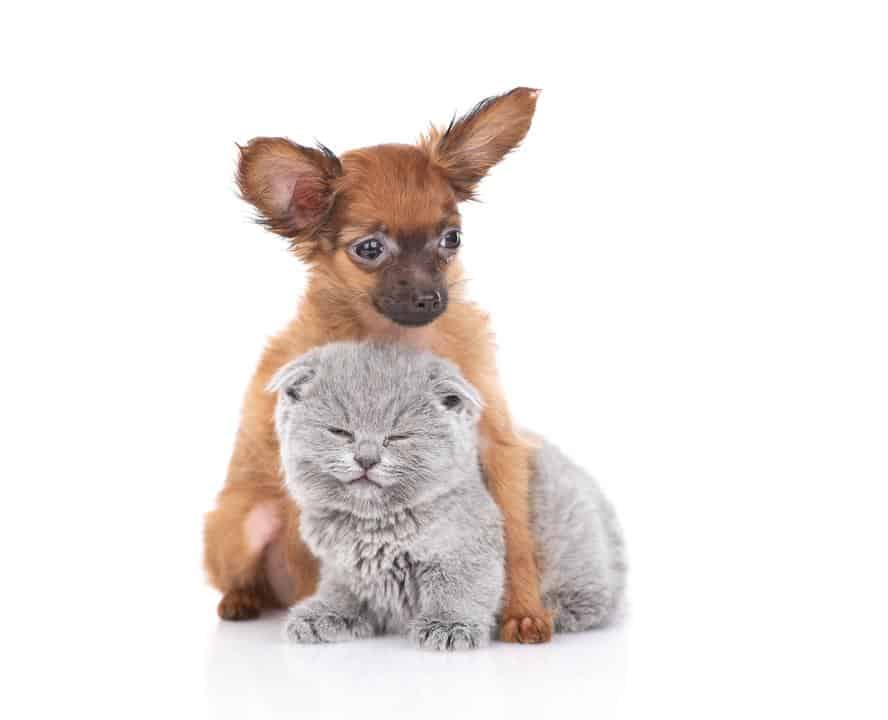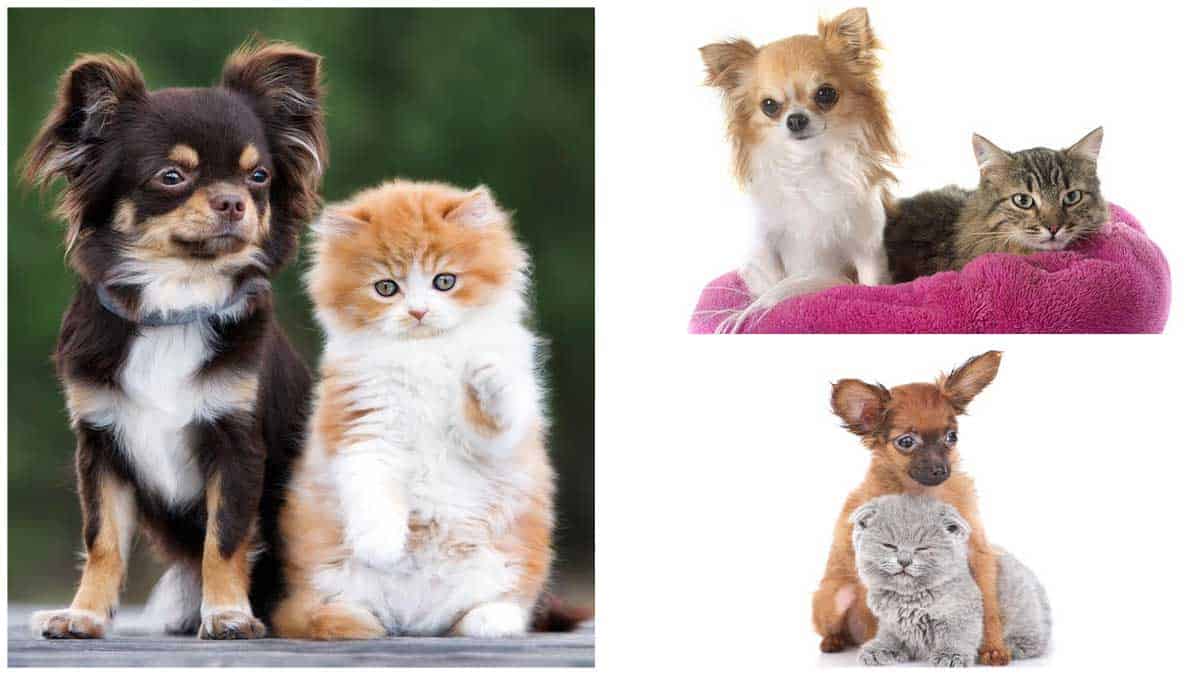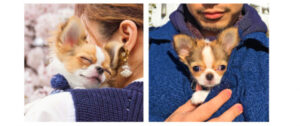So you’ve researched and decided on the best dog for your family. You found the perfect Chihuahua, and you’re ready to bring him (or her) home. But, how are you going to introduce your chihuahua to a kitten?
There’s just one problem: you don’t know how your kitten will react! Or, on the flip side, you’re bringing home a new kitten and don’t quite know how your Chihuahua will take it! Don’t worry, we’ve got the tips you need to help you successfully introduce your Chihuahua to a kitten!
Can Chihuahuas and Kittens Get Along?

Chihuahuas are the smallest dog breed, measuring between 5 inches and 8 inches tall and weighing between 4 pounds and 6 pounds. Despite their tiny stature, Chihuahuas are known to get along with kittens and cats…if they are introduced properly.
Here are some steps you can take to ensure the introduction between your Chihuahua and kitten goes as smoothly as possible.
Introducing Your Chihuahua to a Kitten in 4 Easy Steps:

1. Separate your Chihuahua & Kitten for the First Few Days:
Before bringing your new kitten home, put your Chihuahua in a room with their bedding, food, water, and toys, and close the door. Allow the kitten to have the run of the house, so they can get used to their new surroundings without your Chihuahua bothering them. This type of separation also allows both animals to hear and smell each other from a safe distance.
The next day, you’ll want to put the kitten in a room with their bedding, food, water, and toys and close the door. Then, allow your Chihuahua to have the run of the house. Continue this rotation until your Chihuahua and kitten remain calm and fairly uninterested in each other.
2. Use a Pet/Baby Gate for the First Meeting:
For their first face-to-face meeting, you’ll want to put a pet or a baby gate in the doorway of the room that you had used to keep your Chihuahua and kitten separate. Allow your Chihuahua and your kitten to discover each other naturally through the pet-gate. This process should be done twice a day, for about 2-4 days, or until they are both comfortable seeing each other.
It is important that during this time, you stay calm and relaxed so that your pets will pick up on your demeanor. It is also important that you don’t let either pet jump over the gate. In addition, if either of them starts to act anxious or aggressive, remove them from the situation immediately and try again at another time. On the other hand, you can reward (with food, praise, or toys) for appropriate interactions.
3. Supervision is a Must for the Second Meeting:
The last step of the introduction process is where your Chihuahua and your kitten are in the same room together, with your supervision, of course. To ensure safety in this meeting, you should have your Chihuahua on a leash for this step. That way, the kitten will be able to run and hide if they need to.
In the beginning, these meetings should be brief and you can gradually increase the meeting lengths. This step is likely to take the longest (possibly even a month or so). As with the first meeting, if either your Chihuahua or your kitten becomes anxious or aggressive, immediately remove them from the situation and try again at a later time. Once you are 100% positive that they will not hurt each other, you can start leaving them alone, unsupervised.
4. Be Aware of Their Body Language
It is important that through each step of the introduction process, you watch your Chihuahua and your kitten’s body language. Dogs and cats can’t talk, so you need to be able to read their body language to determine what their mood is like. Here are some things to watch for (and what they mean):

Dogs
The main things to look for with a dog’s body language is their stance, their ears, and their tail.
- Aggressive – A dog showing aggression will stand firmly on the floor, with their eyes starring straight ahead, their ears pinned back, and their teeth may be showing.
- Anxious – A dog who is anxious will stand with a tense posture, their neck stretched out, and their tail sitting low.
- Fearful – A dog who is afraid will stand with a tense posture but low to the floor, their ears flat back, their tail between their legs, and they may be trembling.
- Playful – A playful dog will jump and run around, their eyes will be normal, their ears will be up, and their tail may be wagging quickly.
Kittens
Kittens will use their tail and their ears a lot when it comes to body language.
- Angry – A kitten who is angry will have their tail moving back and forth rapidly and their ears sticking straight out.
- Friendly – A friendly kitten will have both their tail and their ears upright.
- Relaxed – A relaxed kitten will have their tail upright and slightly moving back and forth and their ears pointed slightly forward.
- Scared – A scared kitten will have their tail between their legs and their ears will be flat and pointed back.
Introducing your Chihuahua and your kitten in a proper manner will ensure that they have a caring, lasting relationship going forward!
Source: chipets




